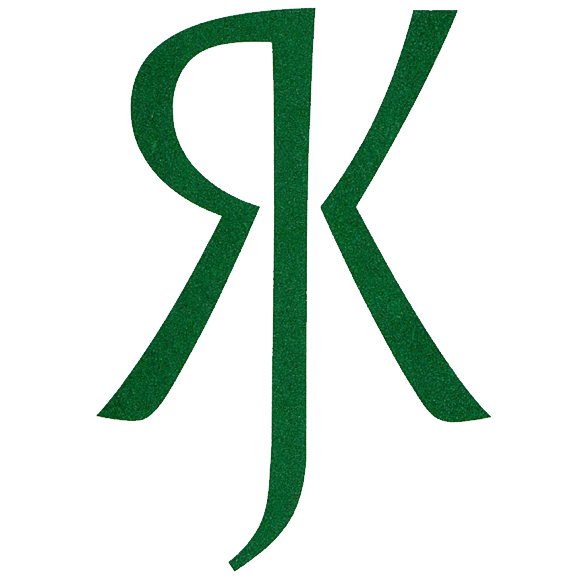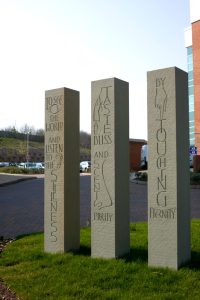Millennium Stones
Standing Stones demonstrate the need of our ancient forbearers to mark the landscape with something other than utility. The more we engage with the industrially produced, the computer designed, the more we isolate ourselves from nature, generating a hunger for objects rooted back into the natural world. Standing stones uniquely respond to this hunger. As we move our hands over the surface and explore with touch and eye 240 million years of their making written onto their surface, they become not just a geology lesson in passing time but an expression of time standing still, a magical moment given by the very presence of a Standing Stone.
-
Millennium Stones
Rupert Otten of Wolseley Fine Arts invited me to produce a work to mark the millennium; I chose to carve 10 standing stones to mark the double Millennium from the birth of Christ to 2000AD. Each stone represents a 200 year segment and is inscribed with a quotation from a writer prominent in that period.…
-
Westoe Newcastle
Two Caithness standing stones, one with a text from Philip Larkin and the other with a quotation from Antoine de Saint-Exupery. The Larkin text in particular has an extraordinary emotional resonance, the simplicity and beauty of the language activates our awareness of that universal truth, Death, and fills it again with the power to horrify.
-
Tyger Tyger
Welsh Slate standing stone 2150 high x 240 x 50. Natural riven surface with text from William Blake’s poem. The words are deeply carved and set out in short lines to allude to a tiger padding rhythmically through the forest. The tiger’s eyes are gilded.
-
Still Point
Caithness standing stone 4.7m high in Austin Friars, City of London. The text is taken from T.S. Eliot “Burnt Norton”. Part of a series of carved text pieces placed in the square.
-
Be Still and MANΘANE
A pair of 2 metre high riven Welsh Slate standing stones. Carved with the words BE STILL and the Greek word MANΘANE meaning “know”. Private collection, Cambridge.
-
Let the man return, St Peter of Alcantara
This giant Caithness standing stone is 5 metres high. The stone was found abandoned in a quarry near Thurso in the North of Scotland. The inscription is taken from the writings of St Peter of Alcantara, a 13th century Spanish saint. Private collection in Wiltshire.
-
BP Standing Stones
Caithness stone circle commissioned by BP for their headquarters, featuring texts with an environmental message.
-
Five Senses, Keele University
Three Forest of Dean standing stones with chiselled surfaces and carvings illustrative of the 5 traditional senses.
-
Cromarty Emigration Standing Stone
The inscription is from Hugh Miller’s report in the Inverness Courier of the sailing of the Cleopatra in June 1831, with the names of 39 ships which embarked from Cromarty for the New World in the 1830s and 1840s.


